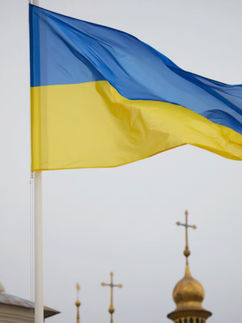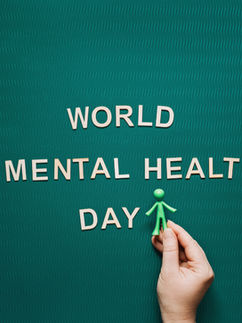Another Opium War? Fentanyl and the US-China Relationship
- Young Diplomats Society

- Apr 2
- 6 min read
By Alexander Anchor

The Opium War and China’s Century of Humiliation
In the late 1700s, Imperial China under the Qing Dynasty was the world’s wealthiest and most culturally advanced nation. Innovations such as porcelain, gunpowder, and silk meant the Qing had everything that the Europeans wanted, while the Qing showed little demand for European goods. Furthermore, Britain’s insatiable appetite for tea led to a trade deficit with the Chinese worth a million pounds. Their solution? Opium. An addictive drug grown in nearby India.
Between 1729-1838, opium exports to China grew astronomically from 200 to 40,000 chests a year, reflecting the widespread addiction that had slowly saddled the country. By 1830, people were dying on the streets, selling their businesses and evading taxes in order to afford their daily visits to the opium dens that had sprung up across China. Where it was once courteous to offer your guests a cup of tea, it had become customary to offer them a pipe. The once proud and prosperous Qing Dynasty had entered a hedonistic state of decay.
Despite the Emperor outlawing the use and importation of opium, the British continued to smuggle it into the country. This outraged the Qing, who in 1839, destroyed 20,000 chests of opium triggering the First Opium War. Following their defeat, the Qing were forced to sign the Treaty of Nanking which required them to pay the equivalent of $21 million in reparations, open ports to Western trade, and cede the territory of Hong Kong to the British Empire. This however, was only the beginning.
Over the next hundred years, the Opium War would set off a disastrous chain of events in China. An era characterised by incessant civil uprisings like the Taiping Rebellion (1850-1864) where 20 million died. The First Sino-Japanese War (1894-1895) led to the forced cession of the island of Formosa, now known as Taiwan. The partitioning of China in 1896 among colonial powers, which ultimately led to the Qing Dynasty’s collapse in 1912. A second Second-Sino Japanese War (1937-1945), and soon after, The Chinese Civil War (1945-1949) which resulted in the deaths of millions, Communist victory, and the establishment of the People's Republic of China in 1949.
This century of calamity in China’s history, marked by the deaths of tens of millions, colonial subjugation, the loss of territory, and the collapse of one of the world’s most prominent empires, is known as the Century of Humiliation. And it all began with an addictive opioid.
Fast forward 180 years. The United States of America, like the Qing, is the world’s biggest economy. Like the Qing, its culture is highly influential and has spread across the globe. And just like the Qing, it is in the grips of an opioid crisis.
America’s Fentanyl Crisis
In 2016, the pop music legend Prince was found dead in an elevator at his Paisley Park estate in Chanhassen, Minnesota. An autopsy would later reveal that he had died after consuming a counterfeit drug disguised as the painkiller, Vicodin. It was laced with the lethal opioid fentanyl.
Four years later in Nashville, Tennessee, 22-year-old Romello was sitting at home alone during the pandemic when he decided to try cocaine. Perhaps he saw the temporary high as an escape from the despair and isolation due to the lockdown. He was later found dead, the cocaine had been laced with fentanyl.
About 900 kilometres west in Colorado Spring, two brothers, aged 21 and 19, were struggling with the depressive effects of the lockdown. Both decided to take what they believed was the prescription drug, oxycodone. The drug was a counterfeit containing fentanyl. Both brothers died.
On average, fentanyl kills 200 Americans every day or 73,000 every year. It is the leading cause of death for Americans aged between 18-45. Unlike other drugs such as crack-cocaine, it does not disproportionately affect a certain class, gender or race. Across the United States, fentanyl has torn communities apart and devastated families. In 2021 alone, 2.6 million American children were raised by other relatives due to parental addiction to fentanyl. And in 2020, fentanyl cost the United States’ $1.5 trillion USD, 1/20th of its GDP.
At the time, Prince’s death was uncommon and unusual. In hindsight, it was an ominous foreshadowing of the deadliest wave in America’s ongoing opioid crisis.
Fentanyl and the US-China Relationship:
Fentanyl is a synthetic opioid legally used to treat severe pain. It is 100 times stronger than morphine and 50 times stronger than heroin. However, fentanyl is also sold illegally and mixed with other street drugs because it is inexpensive and highly addictive. As seen from the aforementioned tragedies, it is also regularly found in counterfeit medicines. Often users do not realise that they are consuming fentanyl, increasing the likelihood of an overdose.
Prior to 2019, the overwhelming majority of illicit fentanyl exported into the US came from China. Following diplomatic pressure, the Chinese government scheduled the drug in 2019 and direct exports significantly decreased. However, in violation of their own laws, Chinese chemical companies continue to export precursor chemicals to Mexico. Mexican drug cartels use these chemicals to make fentanyl and smuggle the finished product into the United States. In 2021, the US Customs and Borders Protection Agency seized 5,080 kilograms of fentanyl along the southern border. In 2023, this grew to 12,247 kilograms.
The illegal fentanyl trade has further strained and accelerated the deterioration of the US-China relationship. “And unlike the US Government, which seeks to delink counter-narcotics cooperation with China from the overall bilateral geostrategic relationship,” argues Felbab-Brown from the Brookings Institution, “China subordinates counter-narcotic efforts to its geostrategic relations.”For instance, In August 2022, following House Speaker Nancy Pelosi’s visit to Taiwan, China ended its counter-narcotic law enforcement operations with the US. Later, the Chinese Communist Party stated that it would resume counter-narcotic operations with the US if it lifted the human rights sanctions.
Given the escalating geostrategic tensions between America and China, it is difficult to ignore the possibility that the CCP is allowing precursors to flow into Mexico, where they are manufactured into finished fentanyl and smuggled into the United States. After all, America possesses a modern amphibious military capable of disrupting China’s territorial ambitions in Asia, remains the only economy with the capital to provide alternative direct foreign investment, and, most importantly, is the leader of a rules-based international system that favours liberal democracy and opposes party-state autocracy.
Although the Chinese government scheduled fentanyl, which limited the right to manufacture and sell fentanyl along with its precursors to only five Chinese chemical companies, thousands of websites on the Chinese internet continue to sell the drug and its precursors. This is especially damning of the Chinese government considering its ability to successfully censure and remove all content on the internet it considers a threat to the regime. Websites including YouTube, Facebook and entire search engines like Google are inaccessible in China.
Additionally, there is currently a nationwide subsidy scheme for all companies that manufacture and export fentanyl and its precursors. This is unnecessary and inconsistent with China’s own laws which only licences a total of five companies to manufacture and sell fentanyl.
Given that Chinese internet users can only use their real names, and that chemical companies need to apply in order to be eligible for subsidies, Chinese law enforcement should easily be able to identify which companies and individuals are illegally manufacturing and selling fentanyl.
The Fentanyl War?
Under Xi Jinping, China has undergone a massive military modernisation in order to support what he calls the “China Dream” of “national rejuvenation”. Intrinsically tied to this idea is the belief that had there been no Century of Humiliation, China would presently be the world’s premier power and, notably, hold sovereignty over Taiwan. Unfortunately for the CPP, the United States is the world’s hegemon and the chief architect of a liberal international order.
Given that both sides of the politics in America are determined to prevent China from usurping the United State’s position or annexing Taiwan, is China drawing from its own history and applying the destructive power of opioids to weaken its greatest foe? With Chinese authorities turning a blind eye to the illegal trafficking of fentanyl precursors into Mexico, it is certainly not beyond the realm of possibility.
Alexander Anchor is a third-year student at the University of Sydney, pursuing a degree in Philosophy, Politics, and International Relations. He is particularly interested in the US-China rivalry, the Indian-Russia relationship and Australia finding its place in Asia. In addition to these areas, Alex is deeply engaged with the fragility of global supply chains, as well as the historical and political forces that shape contemporary world affairs.

















Interesting piece! I've often thought about the parallels between the opium addiction that afflicted China in the 18th century and America's own fentanyl crisis today.